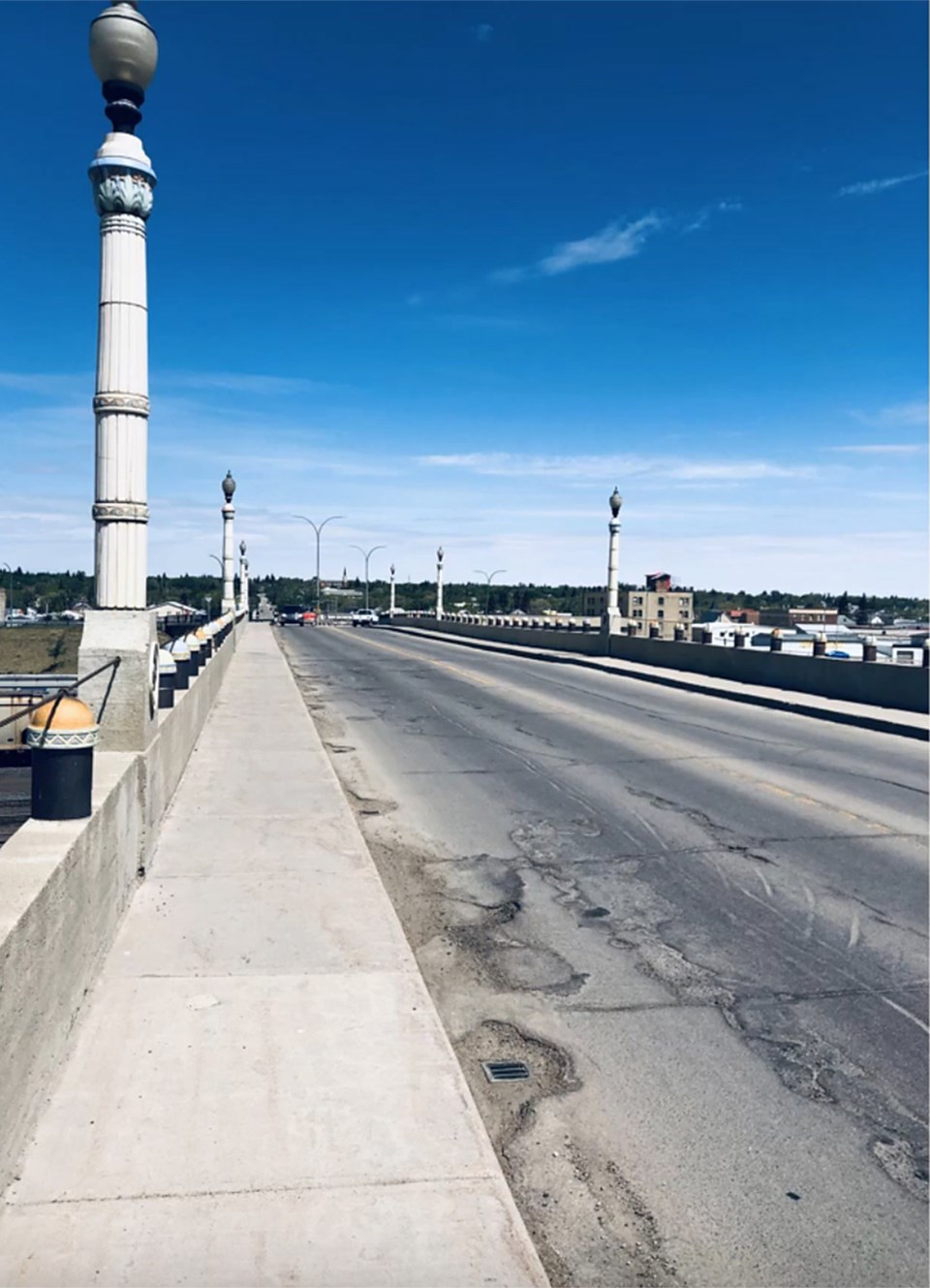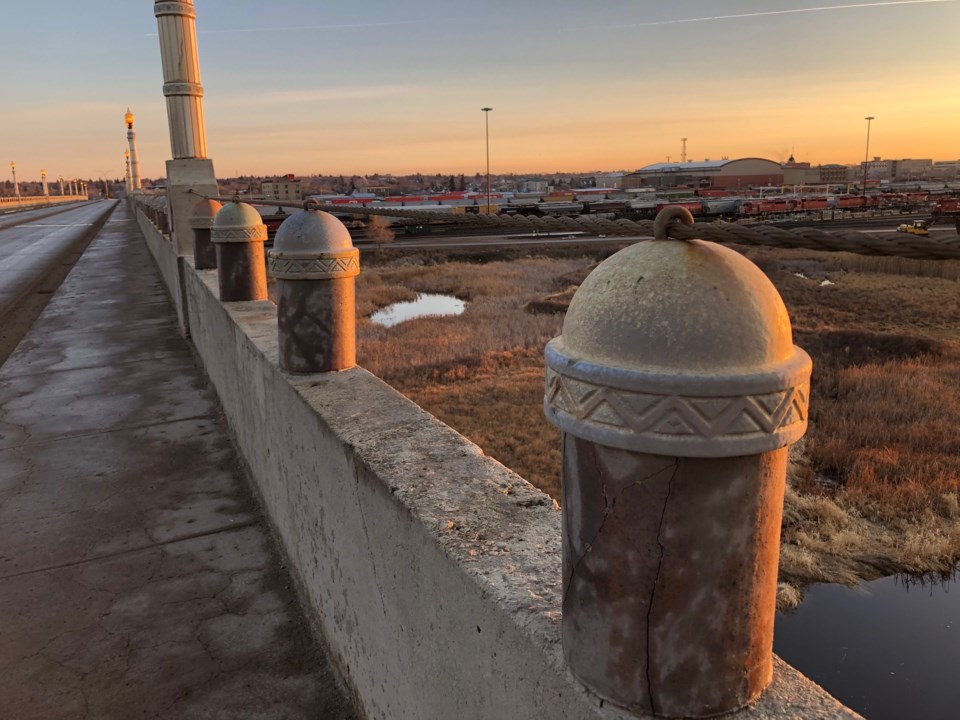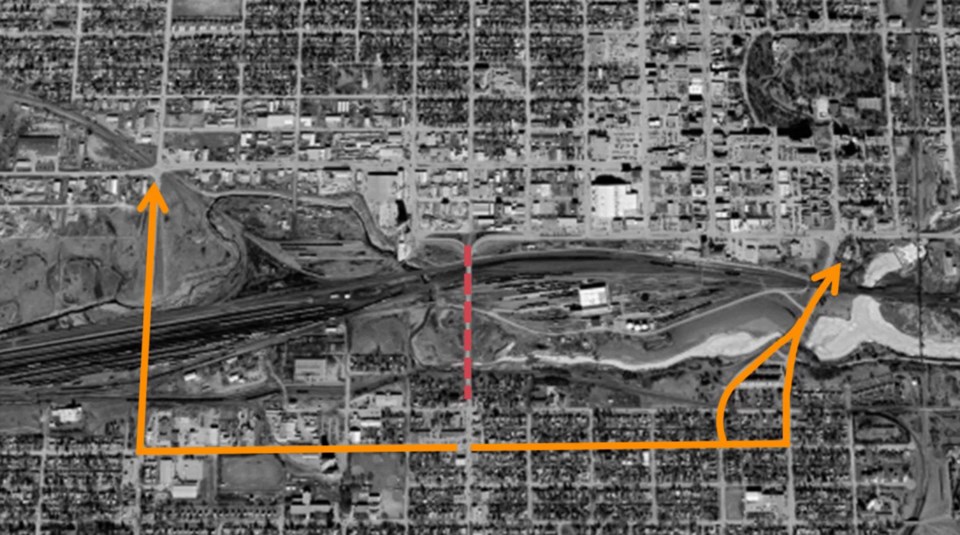And now things have reached the point of public consultation, including an online virtual forum on Thursday night that helped shed light on some of the potential plans for the structure’s rehabilitation.
The event, which was hosted by City of Moose Jaw communications manager Craig Hemingway and featured advisors Stephen Chiasson and Ellen McLaughlin with Associated Engineering, covered a handful of key areas -- what the rehabilitation might involve, the heritage aspects of the structure and how traffic might flow during construction work.
The History
First, a bit about the bridge’s past and where we are today.
The viaduct -- which is considered a non-designated heritage property -- was first built in 1929 and replaced a wooden bridge that had been in place to cross Thunder Creek.
The now-429-metre span is comprised of three separate structures, including the original 329-metre span, a concrete span that replaced the north span in 1965, and the original truss that was replaced by Canadian Pacific Railways with a steel beam and concrete span in 1989.
That work by CPR, over 30 years ago, is the last known rehabilitation.
Currently the bridge features two 1.5 metre sidewalks on each side of the north-to-south span, as well as a 9.1 metre-wide two-lane street.
 The damage to the road surface is evident in this photo. MooseJaw.ca
The damage to the road surface is evident in this photo. MooseJaw.caNeeded Work
Chiasson opened the work plan portion of the presentation by stating the obvious.
“Anyone who has driven or walked across the bridge in recent years, obviously the asphalt on the driving surface is in pretty bad condition, it has lots of potholes and is quite deteriorated,” he said. “The main part of this rehabilitation that the city will be undertaking is to address that driving surface. Not only will the city be looking to remove the asphalt on the concrete deck, they’re also going to be looking to remove the top portion of the concrete surface below the asphalt.”
That work will be needed because the concrete has deteriorated due to road salt, and the testing that closed the bridge for a week in August showed there should be some partial depth concrete removal and have that replaced.
As for the road surface itself, the city has a pair of options -- simply re-pave the repaired concrete or replace the existing asphalt with thicker concrete. From a bridge usage point of view, the latter option would seem ideal.
“Currently there’s a 10-ton limit, and by removing the asphalt and putting reinforced concrete on, we can make that concrete slab thicker and hopefully put heavier vehicles on it like city busses and school busses and emergency vehicles,” Chiasson said.
Other work that will be undertaken includes replacing the expansion joints, ensuring drainage is adequate and enhancing the barriers on the bridge.
 Some of the unique architecture of the Thunderbird Viaduct. (Scott Hellings photo)
Some of the unique architecture of the Thunderbird Viaduct. (Scott Hellings photo)Maintaining Heritage
Whatever work is done, it’ll be undertaken with a serious eye for maintaining the heritage of the structure.
The way the bridge is built itself is very unique not just for the time it was built, but even today, said Chiasson.
“So this rehabilitation is going to look to retain that and not lose the history and the way the structure looks in the landscape of Moose Jaw,” he added.
Then there’s the architecture. The bridge features terra cotta bollards and posts across its entire span, offering a further unique look. There’s also a heavy First Nation heritage in the form of a series of decals dotting the structure.
“The decals are a tribute to the first settlers who used the area for living and hunting, the bridge was an original crossing point for First Nations people,” Chiasson said. “Even the name ‘Thunderbird’ is a First Nations word, and it’s believed Thunder Creek itself is named after Thunderbird as well.”
All of that would be given serious consideration regardless of the work undertaken.
 A look at the re-routing that would occur if the Thunderbird Viaduct is closed for rehabilitation. MooseJaw.ca
A look at the re-routing that would occur if the Thunderbird Viaduct is closed for rehabilitation. MooseJaw.caTransportation Options
McLaughlin covered how the construction might affect traffic and what could be done to mitigate delays and costs, in addition to dealing with active modes of transportation like cycling and walking.
Three options for sidewalks were presented using other bridges in Saskatchewan as examples, including the current 1.5 metre set up with no barriers, two-metre wide sidewalks with a small barrer and a three-metre sidewalk with a full barrier between traffic and pedestrians.
“The benefit of the three-metre wide sidewalk is it would meet current active transportation standards, would be a full multi-use path and would allow cyclists and pedestrians to navigate around each other as they travel on the sidewalk,” McLaughlin said. “This could be accommodated on the bridge by amalgamating the two existing structures onto one side.”
As for how things might look when it comes to construction, the primary option presented involved complete closure of the bridge and re-routing traffic to the Ninth Avenue bridge and the Second Avenue N.E. underpass. That would lead to the shortest amount of construction time and maximum amount of safety for workers.
A second option involves signal light alternating traffic, where temporary signal lights would be installed at each end of the bridge and work would take place on a single lane at a time. This option would keep the bridge open but with delayed traffic. It would also result in a longer construction time, increased cost and greater risk to workers next to live traffic.
What’s Next?
The Thunderbird Viaduct project still has a long way to go before work occurs, with the current public consultation portion just one step along the way.
The City of Moose Jaw is also taking advice through an online survey, which can be found on the Thunderbird Viaduct page under the heritage properties tab on the city website.
Once stakeholder engagement has been completed, plans will be presented to city council and city administration and costs will be determined, after which the final direction the rehabilitation will take will be determined.
For more information, be sure to visit the City of Moose Jaw webpage at moosejaw.ca.




